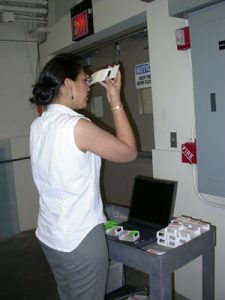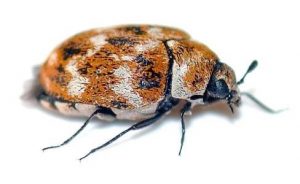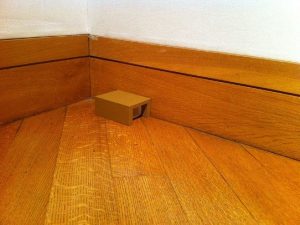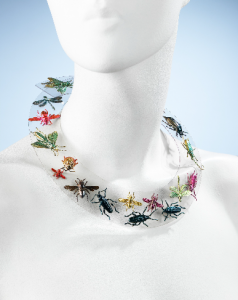In May 2016, the Collections Care Group at the Metropolitan Museum of Art hosted a symposium focused on Integrated Pest Management. The CCG is an active group that seeks to “increase communication across departments and staff in order to improve our ability to care for the collection.” The May symposium hosted four speakers who shared different experiences and perspectives regarding IPM.
Emily Kaplan – Integrated Pest Management at the Smithsonian National Museum of the American Indian

Emily presented a lot of practical pest management information within the context of the history of the NMAI collection. In the early 2000s much of this collection was moved from a storage facility in the Bronx to a purpose-built research and storage building in Suitland, MD. This move provided many opportunities to improve pest management.
During the pre-move inventory, objects were assessed for past or present pest activity. Objects were treated in a freezer before being moved into their new storage locations. Information about freezers is available here.
The Cultural Resources Center in Suitland was designed with prevention in mind – collections staff provided input regarding the building envelope that resulted in improved doors and practical landscaping. The CRC staff have robust systems of training, monitoring, tracking, and cleaning maintenance. A full-time contractor position includes spending about 50% of the worktime on monitoring and tracking.
Emily stressed that pest management work is always ongoing – especially with collections that include vulnerable materials and that are actively used for research and exhibitions.
A PowerPoint about the IPM program at NMAI is available here.
Louis Sorkin – IPM at AMNH: Past, Present, Future

Lou’s presentation was quite the eye-opener! The first portion focused on pest management at the American Museum of Natural History. With a long history of pest management work, AMNH staff participated in the founding of the IPM Working Group. Lou described the history and goals of the IPM-WG and gave detailed information about monitoring and tracking. If you haven’t already explored all the resources on the IPM-WG website, consider this your invitation.
He stressed the importance data collection and maintenance so that all the information from monitoring can be used to craft the most effective responses.
The second portion of Lou’s presentation included many dramatic images of insects that are common in the NE United States. He gave detailed information about the lifecycles as well as preferred habitats and food sources for each pest. Fact sheets for many common pests are available here.
More information about IPM at the NMAH is available here.

Eric Breitung – Guidelines and Best Practices for IPM at The Met
Eric brought the discussion home. He talked about the newly-formed IPM Group at the Met, including short-term goals and long-term strategies. One short-term goal is to create reference guides for specific pests. Another goal includes increased IPM training for staff – this symposium marked a strong step in that direction!
The long-term strategy seeks to make IPM efforts more effective and efficient. While each department will continue to monitor their exhibition, storage, and work spaces, there will be increased interdepartmental support. The IPM Group will provide informational and staff resources to assist with routine prevention work as well as emergency responses.

Laura Mina – Integrated Pest Management at the Costume Institute: guiding principles and practical solutions.
It’s challenging to write about my own presentation, but it’s available on the IPM-WG website here.
My presentation began with a brief history and overview of Integrated Pest Management. Next, I described the ways in which the Costume Institute staff works to protect our collection from pests. I included a basic action sequence that detailed all the steps taken from an initial sighting through eradication. I concluded by acknowledging that successful IPM is a team effort, and thanking everyone whose work contributes to keeping our collection safe.
After the presentations, there was time for Q&A. The discussion ranged from specific concerns about different materials that are suitable for low temperature treatments (read all about it here) to broader questions about pest management work in museums. I think the symposium provided a very helpful opportunity for staff at the Met to learn more about IPM in general, as well as the current practices and future strategies at our museum.
